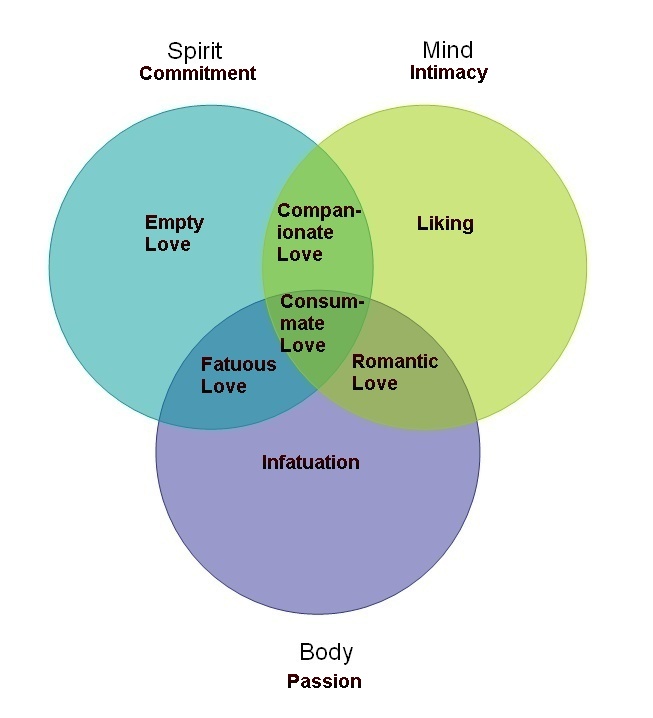Sternberg's Triarchic Theory of Love and the Intrapsychic Taxonomy
Sternberg (1988) states that a relationship may be characterized in terms of three elements, which are passion, intimacy and commitment. These may be visualized, according to Sternberg, as three sides of a triangle. Passion is positioned at the base, while intimacy is to the right and commitment is to the left. Sternberg then states that the three aspects can combine to characterize seven conceptualizations of love relationships.
These map precisely onto the intrapsychic taxonomy, where body is on the bottom, mind is on the right, and spirit is on the left. These two sets of concepts were independently mapped, yet converge remarkably well.

Figure Three. Intrapsychic Taxonomy and Sternberg's Triarchic Theory of Love.
Using set theory, Sternberg posits eight types of love. Where neither passion, intimacy nor commitment is present, there is nonliking.
Where only passion is present (Body only), there is infatuation.
Where only intimacy is present (Mind only), there is liking.
Where only commitment is present (Spirit only), there is empty love.
Where both passion and intimacy are present, there is romantic love.
Where both passion and commitment are present, there is fatuous love.
Where both intimacy and commitment are present, there is companionate love.
Where passion, intimacy, and commitment are present, there is consummate love.